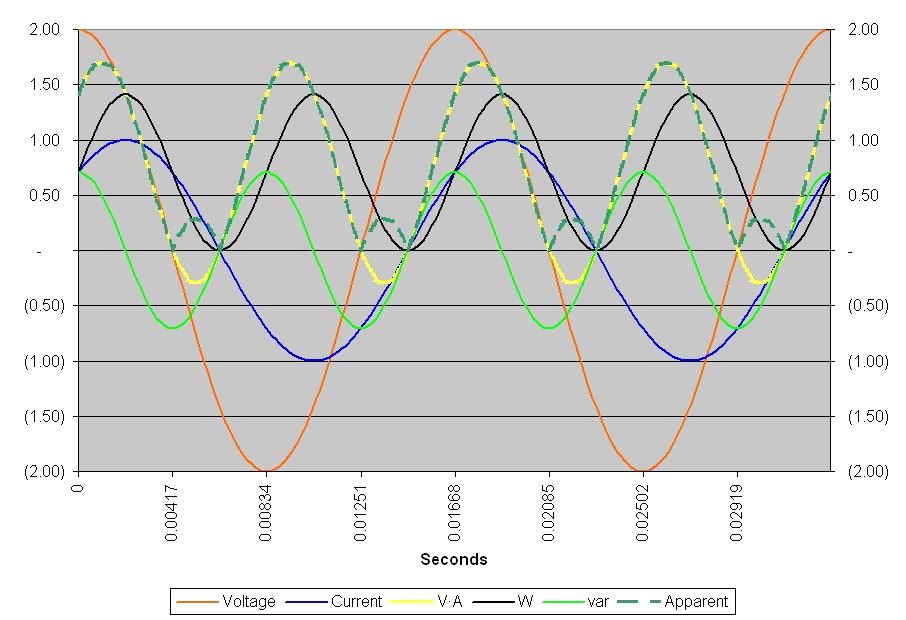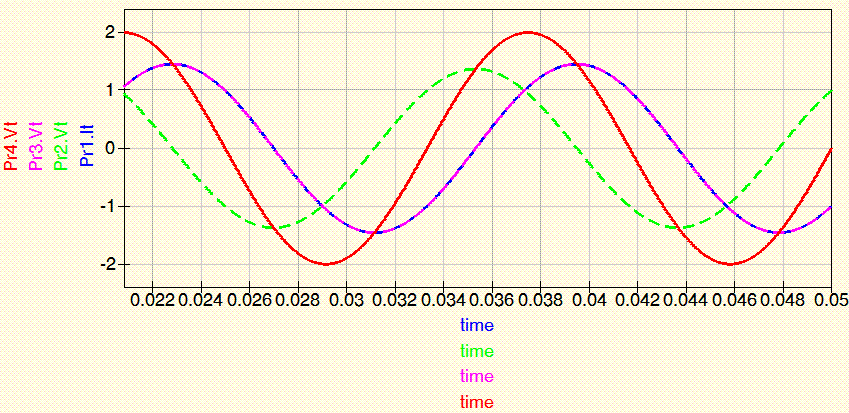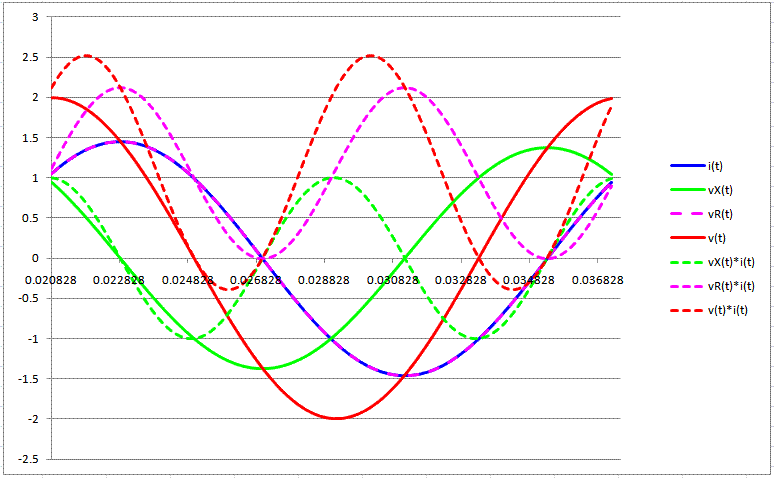Discussing and proving and doing farther works, I really enjoy it guys to have such a great and good conversation and discussing.
Ok, anyway, Smart$: very nice graph in excel but let me ask you one question in graph:
I have just post one instant of time as an example here from your excel sheet.
Here at time equal to 0.020828 you have got the following data.
vX(t)*i(t) ( Reactive Power ) = 0.99670 Var
vR(t)*i(t) ( Real Power ) = 1.11807 Watt
v(t)*i(t) ( Apparent power which is called by you) = 2.11478 VA.
Lets takes consideration of one instant of time not farther and see
S ^ 2 = P^2 + Q^2
By puting the value of P and Q at the same instant of time, will we get the exact value of your excel VA? Lets see
S^2 = (1.11807 )^2 + (0.99670)^2
S = 1.4978289 VA
I am wondering why this formula does not match your excel VA (2.11478) and Now can you tell me the difference between these two.
Ok. If I am wrong please correct me at any instant of time.








